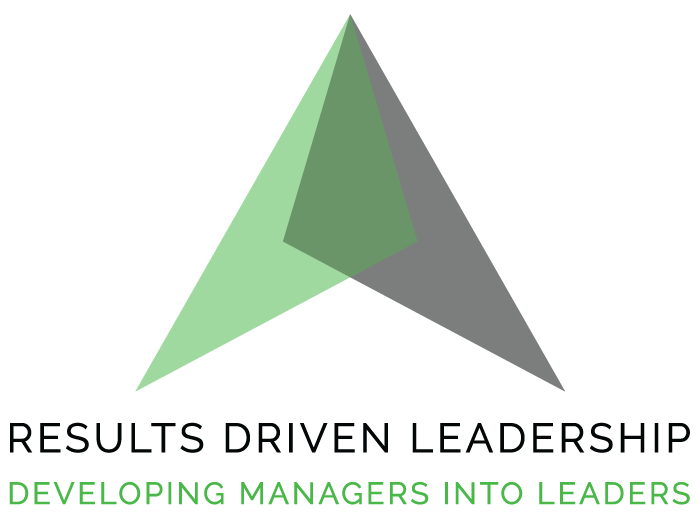Getting accurate reviews and feedback is sometimes really challenging in the workplace. How can you provide opportunities for fair and accurate assessment of yourself and your team members?
This is where 360-degree feedback comes into play!
Join us as we take a closer look into how 360-degree feedback can enhance executive leadership skills, improve self-awareness, and drive continuous improvement.
360-Degree Feedback
360-degree feedback is a comprehensive evaluation system that collects feedback from an person’s peers, subordinates, and supervisors. This system also includes self-assessment. By gathering input from various sources, it offers a well-rounded view of an executive’s performance.
Each component of 360-degree feedback provides unique insights. Peer reviews often highlight teamwork and collaboration skills. Subordinate feedback can show leadership and management effectiveness. Supervisor evaluations focus on strategic vision and overall performance.
Combining these perspectives helps create a complete picture of an executive’s strengths and areas for improvement.
Historical Background
The concept of 360-degree feedback has evolved over time. It started gaining popularity in the 1950s and 1960s as businesses sought more effective ways to evaluate leadership.
Early versions were simple and focused mainly on supervisor evaluations. Over the years, the approach expanded to include input from peers and subordinates.
This expansion aimed to provide a more accurate and balanced assessment. The rise of technology has further transformed the feedback process.
Online platforms and tools now facilitate anonymous and detailed feedback collection. These advancements have made 360-degree feedback more accessible and efficient for organizations of all sizes.
Importance in Modern Leadership
360-degree feedback is especially relevant in today’s leadership landscape. Executives face complex challenges and high expectations.
They must balance strategic vision with effective management. Traditional feedback methods, which rely solely on supervisor evaluations, often fall short.
They can miss critical insights from those who work closely with the executive. By including multiple perspectives, 360-degree feedback addresses this gap. It helps leaders understand how their actions impact their team and organization. This comprehensive understanding is crucial for effective leadership.
It promotes self-awareness, continuous learning, and professional growth. In a rapidly changing business environment, these qualities are invaluable.
The Employee Feedback Process
The 360-degree feedback process involves gathering feedback from multiple sources within the organization. It starts with a self-assessment. This step allows them to reflect on their strengths and areas for improvement.
Next, feedback is collected from peers, subordinates, and supervisors. Peers often focus on collaboration and teamwork. Subordinates provide insights into leadership and management style.
Supervisors assess overall performance and strategic vision. Once all the feedback is collected, it’s compiled into a comprehensive report. This report highlights common themes and key points, offering a clear picture of the executive’s performance.
Tools and Methods
Online surveys are the most common, since they allow for anonymous and honest responses. These surveys include a mix of quantitative questions, such as rating scales, and qualitative questions, like open-ended comments.
The anonymity of the process encourages participants to provide candid feedback without fear of repercussions. Software platforms are available to streamline this process, making it easier to distribute surveys and compile results.
These platforms often offer customizable templates to fit the specific needs of the organization. They also provide data analysis features, which help in identifying trends and patterns in the feedback.
Implementing the Feedback Process
Implementing the 360-degree feedback process requires careful planning and clear communication. It’s important to explain the purpose and benefits of the process to all participants.
This helps to build trust and encourages honest participation. Setting clear expectations is also crucial. Participants should know what is expected of them, how their feedback will be used, and the confidentiality measures in place.
Training can be beneficial for both the raters and the executive being evaluated. Raters need to understand how to provide constructive feedback.
Executives need to be prepared to receive and act on the feedback. Regular follow-ups and support can help ensure the process is smooth and effective.
The 360-degree feedback process is a valuable tool for executive development. By involving multiple perspectives, it provides a comprehensive evaluation that traditional methods cannot match.
The use of modern tools and platforms makes the process efficient and accessible. Implementing this process with clear communication and support can lead to meaningful insights and professional growth. This approach helps executives understand their impact on the organization and fosters continuous improvement.
Multi-Rater Feedback Benefits
Multi-rater feedback offers a holistic view of an executive’s performance. Unlike traditional evaluations that rely on a single source, this method gathers insights from various angles.
Peers, subordinates, and supervisors all contribute their perspectives. This mix of viewpoints helps create a detailed and balanced assessment.
One of the key benefits of multi-rater feedback is its ability to identify both strengths and weaknesses. When feedback comes from various sources, it highlights consistent patterns in behavior and performance.
This makes it easier to pinpoint areas where the executive excels and where improvement is needed. For example, if multiple subordinates note that an executive is approachable and supportive, this strength becomes clear.
Conversely, if peers frequently mention difficulties with communication, this area for improvement is evident. The diverse input helps avoid blind spots that might occur with single-source feedback.
Enhancing Self-Awareness
Multi-rater feedback is also valuable for enhancing self-awareness. Leaders often have a perception of their own performance that might not align with how others see them.
Receiving feedback from multiple sources helps bridge this gap. It provides leaders with a clearer understanding of how their actions and behaviors are perceived by others.
This enhanced self-awareness is crucial for personal and professional growth. It encourages leaders to reflect on their behavior, understand its impact, and make necessary adjustments.
Self-awareness is a key component of emotional intelligence, which is important for effective leadership. Leaders who are self-aware are better equipped to manage their teams and make informed decisions.
Using Feedback for Leadership Development
Using 360-degree feedback for leadership development starts with setting clear development goals. Once feedback is gathered, it’s essential to review it thoroughly and identify key areas for improvement.
Setting specific and achievable goals based on this feedback is the next step. These goals should be realistic and focused on enhancing particular skills or behaviors.
For example, if feedback indicates that an executive needs to improve their communication skills, a goal might be to participate in communication training or to practice active listening during meetings. Setting these types of goals helps create a clear path for development. It also makes sure that efforts are targeted and effective.
Creating a Development Plan
After setting goals, the next step is to create a comprehensive development plan. This plan should outline the steps needed to achieve the set goals.
It can include training programs, workshops, mentorship, and self-study activities. The plan should also set timelines and milestones to track progress.
Having a structured plan helps executives stay focused and motivated. It also provides a framework for continuous learning and improvement.
Regularly reviewing and updating the development plan is important to ensure it remains relevant and aligned with the executive’s growth. This approach helps in systematically building the skills and competencies needed for effective leadership.
Monitoring Progress and Adjusting Goals
Continuous monitoring of progress is a big part of using feedback for development. Regular check-ins and feedback sessions help track progress against the set goals.
These sessions provide an opportunity to reflect on what’s working and what isn’t. If certain strategies aren’t giving you the desired results, you might need to adjust the goals or try different approaches.
Flexibility is key to effective development. Being open to feedback and willing to adapt the plan as needed ensures that the development efforts remain on track.
Using 360-degree feedback for leadership development is a dynamic process. It begins with setting clear, actionable goals based on the feedback received.
Creating a structured development plan helps in systematically working towards these goals. Regular monitoring and adjusting ensure that the plan stays relevant and effective.
This approach helps to address immediate areas for improvement. And it also fosters a culture of continuous learning and development.
By actively using feedback to guide their growth, executives can enhance their leadership skills, making them more effective and impactful leaders. This process ultimately benefits the entire organization by fostering a leadership team that is skilled, self-aware, and committed to growth.
Challenges and Solutions
Implementing 360-degree feedback can come with several challenges. One common issue is the potential for bias in the feedback.
Raters might have personal biases that affect their evaluations, either positively or negatively. This can lead to skewed results that do not accurately reflect the executive’s performance.
Another challenge is the resistance from participants. Some people might be hesitant to provide honest feedback due to fear of retaliation or discomfort with the process.
This reluctance can limit the effectiveness of the feedback. Feedback fatigue is another problem. If the process is too frequent or lengthy, participants might feel overwhelmed and provide less thoughtful responses.
Overcoming Challenges
Addressing these challenges requires a proactive approach. To minimize bias, it’s important to use a standardized feedback form that focuses on specific behaviors and skills.
Providing training for raters can also help them understand how to give fair and objective feedback. Building a culture of trust is key to overcoming resistance.
Clear communication about the purpose and benefits of the feedback process can help alleviate fears and encourage participation. Ensuring anonymity can also make participants more comfortable sharing honest feedback.
To avoid feedback fatigue, it’s important to balance the frequency of feedback sessions. Limiting the number of questions and making the process more focused can help keep participants engaged and responsive.
Ensuring Fair and Constructive Feedback
For feedback to be effective, it must be fair and constructive. Encouraging raters to provide specific examples and actionable suggestions can make feedback more useful.
It’s important to focus on behaviors rather than personal traits to avoid making feedback feel like a personal attack. Providing training on how to give and receive feedback can help ensure that the process is constructive.
Executives should be prepared to listen openly and act on the feedback without defensiveness. Regular follow-ups can help reinforce the value of the feedback and show that it leads to tangible improvements. This helps build a continuous cycle of feedback and development.
Customizing Assessments
Customizing the 360-degree feedback assessment to fit the specific needs of the organization and the executive can enhance its effectiveness. Different roles may require different skill sets, and the feedback process should reflect this.
For instance, a leader in a tech company might need strong innovation and technical skills, while a leader in a customer service-focused company might need exceptional interpersonal skills.
Customizing the feedback form to address these specific needs ensures that the evaluation is relevant and useful. This tailored approach helps in identifying the most critical areas for development, leading to more targeted and effective growth.
Using Assessment Results
Once the feedback is collected and analyzed, it’s important to use the results effectively. Interpreting the data accurately is crucial for creating a development plan that addresses the identified areas for improvement.
Professional coaching can be beneficial in this process. Coaches can help executives understand the feedback and translate it into actionable steps.
The results should be used to set specific, measurable goals for development. Regular follow-up on these goals helps track progress and make necessary adjustments. By actively using the assessment results, leaders can continuously improve their skills and effectiveness.
Comprehensive skill assessment through 360-degree feedback provides a thorough understanding of an executive’s strengths and weaknesses. Assessing key skills such as communication, decision-making, teamwork, and empathy is essential for effective leadership.
Collective Performance Review
360-degree feedback is a powerful tool for executive leadership development. It provides comprehensive insights, fosters self-awareness, and encourages continuous improvement.
At Results-Driven Leadership, we focus on unlocking the untapped potential within your team. Our comprehensive program provides the guidance and the tools your team needs to become better leaders. By using targeted training, we can transform your company into problem-solving pros!
Get in touch today to find out how we can help your business!







